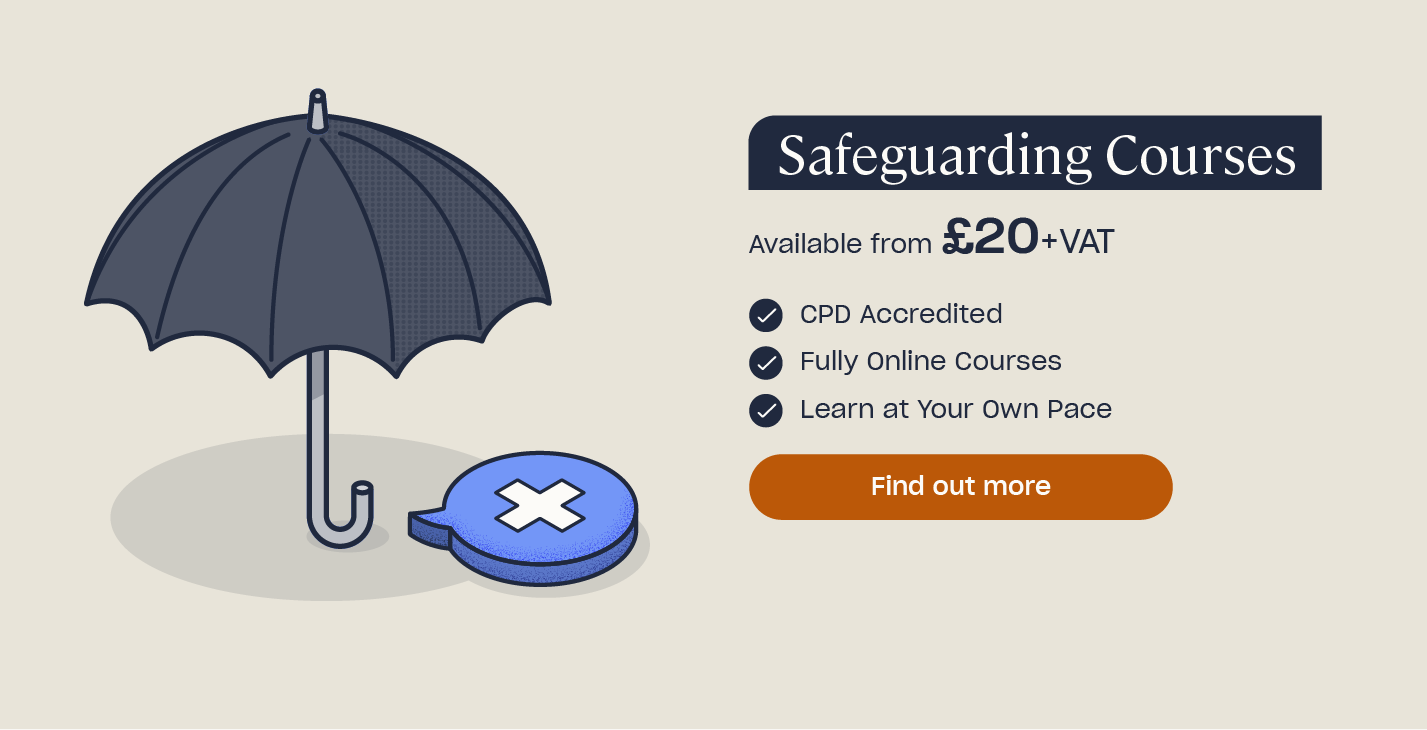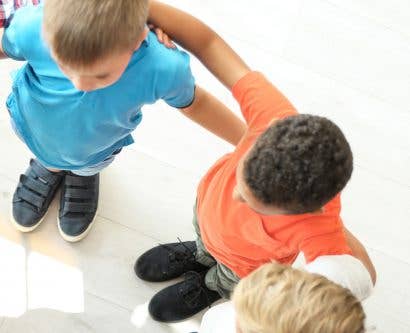8 Ideas for Building Resilience in Children at School
Many children are incredibly good at bouncing back from the hard knocks they may face in life. Their youthful optimism and day-to-day approach can allow them to carry on in the face of scraped knees, broken toys, and difficult homework.
Some challenges will truly test their tenacity, though. How they deal with them is dependent on whether they’ve had the opportunity to develop a healthy approach to adversities. In other words, how much they’ve built their resilience.
The good news is that all children can develop resilience. All it takes is the right influence and support from those around them. In fact, your presence as a teacher can have a hugely positive impact during this malleable phase of their life.
This article will provide you with 8 ideas for helping children build a strong foundation of resilience, which will prepare them for dealing with life’s many challenges.
Why is Resilience Important for Children?
It is during our childhood that we’re most actively influenced by the people around us and the situations we encounter. As children, we begin to develop our identity and place in the world, but in turn we are vulnerable to difficulties that we may not know how to handle, and that may leave a significant impact on us.

This is why building resilience in youth is crucial. Childhood is an effective and important time to embed a healthy mindset, so they can navigate the difficulties they may face at home and in school.
Children may have to deal with all sorts of difficult situations, such as moving house, parents divorcing, difficult exams, losing friends, bullying, and loss and grief. Without resilience, these can cause considerable stress and even have long-lasting effects, which can take time and dedication to overcome in adolescence and adulthood.
It therefore makes sense to integrate resilience in education. Helping them learn this fundamental skill during a time when they are open to adopting new ways of thinking is an effective and beneficial approach.
Need a Course?
Our range of Safeguarding Courses have been developed to ensure that you are able to understand current safeguarding issues and apply the correct actions and procedures where necessary.
Characteristics of a Resilient Child
A child who responds well to difficulties in life will often have the following characteristics:
- A strong sense of independence, autonomy, and self-confidence.
- Ability to communicate well with others and express themselves.
- Good problem-solving skills.
- Strong empathy and respect for others.
- Active interest in school activities.
- Responds well to instructions and guidance.
- Knows how to ask for support.
- Open to trying new things.
While no two children are alike, these are good indicators that a child is resilient. Oppositely, children who have room to work on their resilience may avoid problem-solving and may not feel confident in themselves or in communicating. They may also resist guidance and support and avoid new experiences.

Knowing these characteristics can give you a good indicator of who may need extra support in your class, as well as how your interventions will benefit them.
Found this interesting? Take a look at our Mental Health Resource Pack for Schools.
8 Ideas for Building Resilience in Children
Many resilience activities for kids are easy to integrate in your class. Best of all, they are universally beneficial. You don’t have to focus on one or two specific children or wait until something challenging happens to them. A proactive approach, where you utilise resilience development strategies consistently and regularly, will yield effective and lasting results for all the children in the classroom.
Here are 8 ways to help build resilience in your education setting:
1. Encourage healthy risk taking.
Many people make the mistake of preventing children from taking risks, or they jump in too soon to solve a child’s problems. It comes from a well-meaning place, and in many cases it can be necessary to protect the child. But it could prevent them from developing their self-sufficiency.
So, if you see that a child in your class is doing something that may not go the way they want, but the risk of harm is low, resist the temptation to pre-emptively intervene. Let them face the challenge and attempt to problem-solve on their own. You can offer help if they really do need it, of course.
A good example of this comes from a story Jilian Riley shared on her article about raising creative problem solvers. Her son put a pencil into an electrical pencil sharpener backwards, which caused the metal casing and eraser to get stuck. Rather than telling him off and fixing it for him, she took out the batteries to reduce the risk and allowed her son to get the casing out on his own. She said that, after he got it out, he looked proud of himself, as he had the confidence to test his own problem-solving abilities. She avoided making him feel bad for his mistake, which would’ve discouraged risk taking in the future.
2. Show acceptance of mistakes and losses.
It’s important for you to adopt this mentality every day in class. Doing so demonstrates that mistakes are not the end of the world and you shouldn’t avoid trying new things due to fear of failure. What’s important is reflecting on mistakes and learning from them. This helps children to develop a growth mindset and encourages them to look for solutions, rather than focusing on unhelpful blaming or self-criticism.

For example, let’s say you’re running an art class. One of your students accidentally knocks over a cup of water and spills it, which causes paint and water to go everywhere. Instead of telling them off for being so clumsy and cleaning it up yourself, a better approach is something like:
“Oh, you accidentally knocked over the water cup Charlotte – we’re all clumsy sometimes aren’t we? It’s a shame that it’s spilled on the table and some of our paintings, but don’t fret. Mistakes happen. We can clean it up and start again. Let’s apologise to your classmates and get some paper towels to clean up the spill, shall we?”
Once it’s all cleaned up, you could encourage them to think about what they’ve learnt from the situation: “Where do you want to put your water this time Charlotte to make sure you don’t knock it over again?” This is also a good example of our next point.
3. Ask questions to encourage independent thinking.
Whenever children face problems, you may be tempted to simply tell them the answer. But doing this prevents them from practising self-sufficiency. This is why you should actively ask questions if children come to you with an issue. It allows them to think for themselves and gain valuable problem-solving experience.
For example, let’s say a child in your class is trying to put away some books, but they can’t fit them on the shelf. It’s full because some books are stacked sideways and a box of pencils is taking up a lot of space. The child asks you what to do. Instead of simply telling them, you could encourage them to figure out a solution on their own by asking questions:
“The bookshelf is very full, isn’t it? I think we can do something to create space though. Is there anything we can move on it? What do you think Charlie?” You can give them further nudges if needed, such as: “I think that we could tidy these books up a bit and that pencil box could go somewhere else to free up some space. What do you think we should do with them?”
4. Praise accomplishments in the right way.
Praise and recognition are critical for building a child’s self-confidence. There is a balance you must strike here, however. Excessively and exclusively praising accomplishments and talents, while failing to praise effort, can send the wrong message to children. It may lead to them thinking that they must succeed at everything and be talented to be valued. It can make them afraid of failure and generate feelings of inadequacy, which in turn can lead to poor resilience when they face challenges.

This is why it’s crucial to praise children when they do their best and make an effort, even if they don’t achieve the results they wanted. These qualities are what will help them truly succeed in life and deal with difficulties, not an unrealistic belief that they are gifted and incapable of failing.
5. Define and discuss emotions.
Children should learn how to identify and talk about their emotions. It will help to develop the emotional intelligence they need to handle how they’re feeling when things get tough. Otherwise, confusion and frustration can stop them from carrying on. Resilience involves recognising and controlling our emotions, but not permanently eliminating them, as this isn’t realistic.
In class, take every opportunity that arises to talk about emotions and allow your students to express theirs. For instance, if you’re reading stories, discuss how the characters are feeling and ask children how they would feel in the character’s situation. If a child becomes upset about something, talk to them about how they’re feeling and reassure them that their emotions are normal.
This also helps to develop empathy, which allows us to see situations from others’ points of view and to not dwell on ourselves. Challenges will therefore feel less like personal attacks and more like an opportunity to solve the problem for everyone.
6. Promote optimism and positive thinking.
The best way to do this is by showing rather than telling, as children often learn from the example of others. If you have a positive attitude and respond optimistically to difficulties, observant children will notice and may start adopting this behaviour themselves.

So, when you’re facing a challenge in class, resist the temptation to get frustrated and complain. For example, if you’re trying to use a laptop and it’s not loading properly, it can be tempting to say something like: “Ah this annoying laptop! Why does technology never work for me? This is just great, now I’m going to have to change my whole lesson plan.” This negative thinking can easily rub off on children if you adopt it all the time.
A better approach would be something like: “Ah, I can’t get the laptop to work right now. Well, I’m sure it’ll start working later or I can get someone to help me fix it. For now, let’s do some reading instead. We can enjoy some stories now sooner than we thought!”
7. Encourage interaction with others.
Another key characteristic of resilience is being able to draw strength from friends and family. This is why it’s important that children learn how to develop relationships. While some are natural social butterflies, some may need an extra push. So, where possible, you should create the opportunity for children to practice their social skills.
This could involve paired or grouped work and team-based games during PE. Rather than asking the class to find teams on their own, divide them up yourself. Most children will immediately team up with those they know, and it can be hard for shyer students to come out of their shell if they have to make the first step.
Developing relationships is also important for the next and last tip for building resilience in children.
8. Show that it’s okay to ask for help.
We discussed earlier about encouraging children to take healthy risks and to think through problems on their own. You have to find a balance here too, as you don’t want to imply that they shouldn’t ask others for help. Otherwise, they may feel that they shouldn’t bother others with their problems.
In situations where they’re working through a challenge independently, make it clear that you are still there to help them. For example, when asking them questions, if they really can’t figure out the answer, help them along to reach it.

In turn, you should also ask them for help with things around the classroom. Actively offering and asking for support demonstrates that no one needs to work in complete isolation, not even authority figures. People are always available and willing to help one another, whether it’s everyday tasks or in times of need.
Childhood is a crucial time for the development of essential skills like resilience. Building resilience in youth prepares us for the unexpected difficulties we can face growing up and later in life, which otherwise could affect our wellbeing and ability to achieve our goals. As a teacher, helping children to develop resilience in education means you’re not only preparing them for academic achievements, but also for personal success.
What to Read Next:
- What is Effective Questioning and Why Should I Use it in My Classroom?
- Resilience Quiz
- How to Promote Positive Mental Health in Schools
- How to Encourage Children to Express Feelings & Emotions
- How to Create a Positive Learning Environment
- Online Safeguarding Courses











